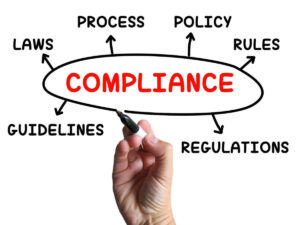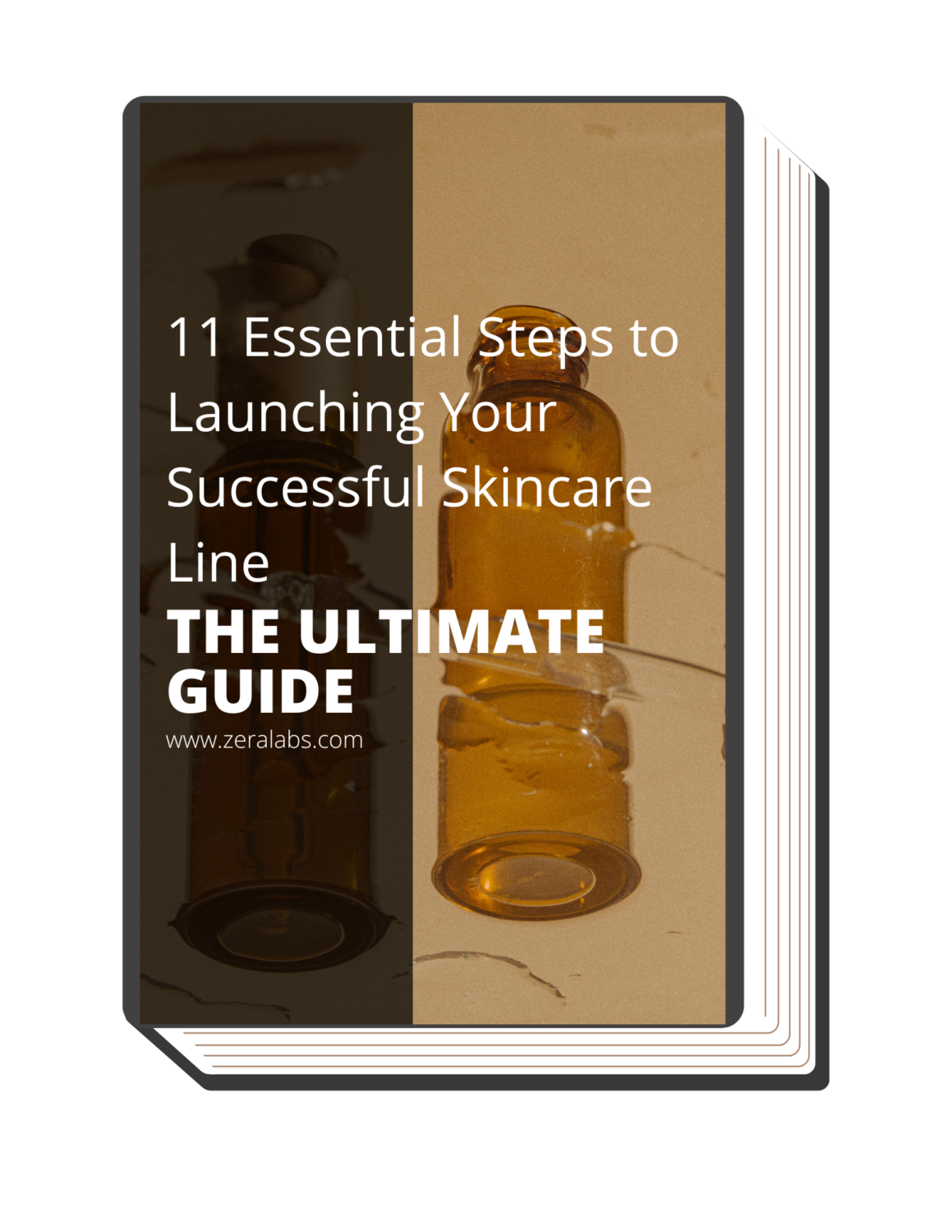Has business owners considered entering the lucrative skincare market? The industry is booming, yet many potential entrepreneurs face challenges in navigating the complex steps to a successful launch.
Addressing this quandary requires a systematic approach. This guide will walk business enthusiasts through the pivotal steps, from comprehending the skincare landscape to the grand product launch. By delving into the intricacies of market understanding, niche identification, brand conceptualization, product development, and more, one will gain the comprehensive knowledge needed to navigate this competitive domain.
Success in the skincare realm is no accident. Dive into the depths of these eleven essential stages and uncover the secrets to launching a triumphant skincare line.
So read on!
1. Understanding the Skin Care Market
The skincare market is a dynamic and ever-evolving landscape, driven by consumer preferences, innovative technologies, and global trends. It’s characterized by its vast product range, from basic moisturizers to advanced serums targeting specific skin issues. The beauty of the skincare market lies not just in its products but in its ability to constantly redefine and elevate itself in response to consumer needs.
Factors such as sustainability, clean beauty, and ingredient transparency have recently taken center stage, reshaping the way products are formulated and marketed. With the rise of digital platforms, brands now have direct access to consumers, allowing for real-time feedback and customization. Having immersed myself in this industry, I’ve observed the incredible adaptability of brands, big and small.
2. Identifying Your Niche
The cornerstone of a successful skincare line is pinpointing a unique niche. In a saturated market, standing out can make all the difference. Recognizing and diving deep into a niche involves understanding various areas:
Understanding Market Trends
Delving into prevailing market trends grants the insights into consumer preferences, product demands, and emerging needs. This awareness empowers business owners to craft skincare offerings that resonate with the target audience. For instance, in a world increasingly conscious of eco-friendly options, creating sustainable skincare solutions can captivate environmentally-aware consumers.

Analyzing Customer Demographics
To effectively address the skincare needs of the potential patrons, comprehending their demographics is paramount. For example, age, gender, skin type, and concerns all play pivotal roles in tailoring the products. Imagine catering to the skincare requirements of a mature clientele by formulating anti-aging serums enriched with potent natural ingredients.

Researching Competitor Landscape
Surveying the competitive arena provides valuable insights into existing skincare lines. By evaluating their strengths, weaknesses, and unique selling propositions, they can strategically position every offering. Take inspiration from a rival’s success in promoting inclusivity by launching a skincare range catering to a diverse array of skin tones.

Defining Unique Selling Proposition
Setting skincare line apart hinges on a distinctive value proposition. This might involve harnessing innovative ingredients, adopting groundbreaking formulations, or adhering to specific ethical principles. Crafting a collection rooted in the use of rare botanical extracts can firmly establish the brand’s unique identity.

Addressing Unmet Needs
Identifying gaps in the current skincare market equips to fill unmet needs. From my own journey, I’ve realized how vital it is to listen closely to consumers’ hushed desires. Tailor every product line to tackle specific issues that are underrepresented. If sensitive skin woes remain underserved, concoct a line of gentle, hypoallergenic products that cater to this niche segment.
3. Conceptualizing Your Brand
Creating a brand goes beyond just formulating products. It encompasses the essence, the story, and the mission that drives the skincare line. This conceptualization process entails several pivotal activities that shape the brand’s identity:

Unearthing Your Brand Identity
At the heart of a remarkable skincare line lies a well-defined brand identity. This identity stems from a profound understanding of the values, mission, and vision. It’s the guiding star that directs the brand’s trajectory. Picture a brand ethos founded on organic principles, echoing a commitment to holistic skincare solutions.
Mission and Vision Formulation
Establishing a clear mission and vision directs the brand’s journey. This step involves determining what the brand stands for, its core values, and its overarching goals. These elements serve as the backbone for all future decisions and strategies. Every time a tough decision arises, revisiting the mission and vision brings clarity.
Designing an Impactful Visual Identity
The visual elements of the brand wield considerable influence over its perception. The logo, color palette, and overall design language should mirror the brand’s personality. Envision a brand identity that marries sophistication with simplicity, radiating a sense of elegance and efficacy.
Mapping Brand Touchpoints
Identifying the various touchpoints where customers interact with the brand is pivotal. These touchpoints includes the website, packaging, social media, and customer service. Each interaction should be a seamless extension of the brand’s essence. Envisage a brand experience that’s immersive and engaging, from online platforms to unboxing.
4. Product Development
Behind every successful skincare product is a meticulous development process. This involves research, formulation, testing, and refinement. This phase is where the skincare line truly takes shape, delivering on the promises the brand has made. Here are some integral facets of this development journey:

Researching and Ideation
Effective product development begins with thorough research and ideation. Dive into scientific studies, ingredient properties, and consumer preferences. Let the product concepts germinate from this wealth of knowledge. Imagine a skincare line where every product is inspired by a deep understanding of skin biology and consumer desires.
Formulation and Testing
Achieving the desired product efficacy involves precise formulation. Combining ingredients in the right proportions, ensuring stability, and conducting rigorous testing ensures that the product delivers on its promises. Recalling the sheer excitement when a formula finally meets all criteria is unparalleled.
Safety and Dermatological Assessments
Safety is paramount in skincare. Conducting dermatological tests and assessments ascertain that the product is gentle on the skin and doesn’t cause adverse reactions. Earning certifications and safety badges also boosts customer trust.
Packaging Innovation
Packaging isn’t just a vessel; it’s an integral part of the user experience. Innovative packaging can enhance usability, preserve product integrity, and reflect the brand’s ethos. Imagine skincare products encased in eco-friendly, sleek packaging that aligns with the brand’s commitment to sustainability.
Effective product development encapsulates these vital subtopics. From research-driven ideation and formulation excellence to rigorous testing, innovative packaging, and regulatory compliance – these elements culminate in a skincare line that stands as a testament to quality and innovation.
5. Branding and Packaging
In the vast sea of skincare products, branding and packaging stand as the beacon guiding potential customers to a product. It’s more than just aesthetics; it’s about communicating a product’s essence and promise at first glance. Here, delve into several crucial aspects that are instrumental in shaping how a brand is perceived:

Crafting a Memorable Brand Identity
In the realm of skincare, a memorable brand identity is a powerful asset. It’s the encapsulation of the values, mission, and unique selling points. Imagine a brand identity that seamlessly aligns with the offerings – a reflection of the skincare solutions bring to the market. From logo to color palette, each element works harmoniously to convey the brand’s essence.
Logo Design and Typography
A logo often serves as the first point of interaction. Selecting colors, shapes, and typography that resonate with the brand’s ethos is essential. Just like a minimalist design could convey simplicity and purity, which might resonate well for a brand emphasizing natural ingredients. A logo should be versatile, ensuring its visibility and impact across various mediums.
Material Selection
The choice of materials for packaging is pivotal not only for product preservation but also for brand image. Sustainable, eco-friendly materials can position a brand as environmentally conscious. Using recycled glass for packaging, for example, not only ensures the product’s safety but also conveys a commitment to the environment.
Storytelling Through Design
Every element of the branding and packaging should tell a story. From the choice of colors to the text on the package, each detail can narrate the brand’s journey, its values, or the benefits of the product. Consider a brand that uses oceanic blues and includes a brief story about sourcing ingredients from the sea – this not only informs but also builds a connection.
6. Regulations and Compliance
Navigating the skincare industry requires more than just understanding the market and conceptualizing a brand. It’s essential to be well-acquainted with the various regulations that ensure product safety and consumer trust.
Ensuring adherence to these standards safeguards the integrity of a venture and the safety of consumers. Delving deeper, it’s clear there are several key regulatory areas skincare line initiators must be familiar with:

Ingredient Approval and Safety Assessment
Every ingredient in a skincare product needs validation. It’s crucial to ensure they’ve been tested, approved, and deemed safe for consumer use. From preservatives to actives, every component should pass rigorous safety checks. Products should not only be effective but, more importantly, safe for users.
Labelling and Claim Verification
Accuracy in product labeling is a non-negotiable aspect. Labels must precisely list ingredients, provide essential safety information, and make claims that can be substantiated. Misleading claims or omissions can lead to regulatory sanctions and tarnish brand reputation.
Animal Testing Policies
Many regions have strict regulations against animal testing. Ensuring that products and their ingredients adhere to these policies is not only a legal mandate but also an ethical consideration. Zeralabs proudly stands behind its commitment to producing cruelty-free products, aligning with the evolving consumer expectations. This aspect often becomes a selling point, with many consumers now looking for cruelty-free labels.
Eco-friendly Packaging Standards
With a global shift towards sustainability, there are guidelines on the type of packaging materials that can be used. Complying with these standards means ensuring materials are recyclable, biodegradable, or sourced sustainably. Being compliant also positions a brand as environmentally responsible.
International Compliance for Export
For those eyeing international markets, understanding varying international regulations is crucial. Each country or region might have specific compliance standards. Ensuring products meet these standards broadens market access while minimizing legal complications.
7. Funding Your Skincare Line
Initiating a skincare line requires more than just passion; capital investment is equally critical. Capital fuels the vision and enables the realization of a brand’s potential. Ensuring there’s ample funding can mean the difference between a brand’s success and stagnation. Let’s delve into the diverse avenues available for funding a skincare venture.

Personal Savings
Delving into personal savings is a common starting point. By using one’s own money, there’s complete control over the funds without the obligations that external funding might bring. While this method offers the most autonomy, it’s essential to ensure enough reserves remain for unforeseen expenses. Leveraging personal savings also demonstrates commitment and confidence in the business’s potential.
Business Loans
Banks and financial institutions offer loans tailored for businesses. These loans provide substantial amounts, depending on the business plan and creditworthiness. Regular repayment terms and fixed interest rates characterize them. A robust and promising business plan can make accessing these loans smoother.
Angel Investors
Seeking out individuals with the financial capacity and interest to invest in emerging businesses can be fruitful. Angel investors often bring in not just funds but also valuable industry insights. They usually anticipate either a return on investment or a stake in the business. In my journey, collaborating with an angel investor provided more than just funds—it was a learning curve and a partnership.
Crowdfunding
Modern problems require modern solutions. Crowdfunding platforms like Kickstarter or Indiegogo allow for presenting the business idea directly to potential customers or backers. These platforms can gauge interest, validate the product concept, and even secure funds through pre-orders or pledges. It’s an innovative approach that merges marketing, validation, and financing.
Venture Capital
When the vision for the skincare line is expansive and aims to capture significant market share, venture capitalists come into play. These are professional outfits managing investments from various sources. They usually enter the scene when high growth is projected, offering sizable funds. In return, they typically request a share in the business or representation on the board.
Identifying the right funding source is as crucial as the skincare formulations themselves. Each avenue has its merits, and a well-researched decision can propel a skincare brand to new heights.
8. Manufacturing and Supply Chain Management
Crafting a successful skincare line goes beyond the formulation. The journey from conceptualization to the end consumer involves numerous stages, and managing this effectively is essential. Both manufacturing and supply chain management ensure that the product remains consistent and reaches shelves timely. Exploring some key areas of focus:

Choosing the Right Manufacturer
Selecting the appropriate manufacturer involves assessing capabilities, ensuring quality, and gauging scalability. Zeralabs has been at the forefront of skincare manufacturing, combining expertise with the latest technologies. A reliable manufacturer ensures consistent product quality. Transparency in ingredient sourcing and processing methods is paramount.
Batch Tracking and Quality Control
Every skincare product batch needs meticulous tracking. This facilitates recall procedures if needed. Quality control checks at different manufacturing stages are essential. Consistent product quality builds trust among consumers. In my many years in the skincare industry, I’ve seen firsthand how a brand’s reputation can be made or broken based on its commitment to quality and tracking.
Inventory Management
An article in Indeed highlighted that an efficient inventory management prevents not just stockouts and overstock situations but also planning andd balancing demands. Technologies such as Just-In-Time (JIT) can optimize inventory levels. The right inventory balance reduces costs and enhances profitability. Accurate forecasting aids in maintaining optimal stock levels.
Logistics and Distribution
The supply chain’s backbone is robust logistics and distribution systems. Ensuring products reach distributors, retailers, or direct consumers punctually is crucial. Packaging plays a role in protecting products during transit. Sustainable logistics solutions can also bolster a brand’s environmental commitment.
9. Building an Online Presence
In today’s digital age, establishing a solid online presence isn’t a luxury, it’s a necessity. Reaching out to a broader audience, engaging with them, and ensuring the brand’s voice resonates is critical. Here’s a step-by-step approach to laying the online foundation for a skincare line:
Step#1 Website Development
According to Meduim, a user-friendly, informative, and aesthetically pleasing website serves as the brand’s digital storefront. Incorporating elements like product descriptions, reviews, and e-commerce capabilities is essential. SEO (Search Engine Optimization) strategies can improve website visibility in search results. A mobile-responsive design ensures accessibility for on-the-go consumers.

Step#2 Social Media Engagement
Platforms like Instagram, Pinterest, or Twitter cater to different audience segments. Consistent posting, engaging content, and prompt responses amplify the brand’s voice. Collaborations or partnerships can increase brand reach. Analytics tools provide insights into post performance and audience behavior.

Step#3 Content Marketing
Blogs, articles, or video content can position the brand as an industry authority. Sharing skincare tips, ingredient benefits, or behind-the-scenes looks can engage the audience. Regularly updating content ensures the audience remains hooked. Collaborations with bloggers or influencers can also boost online visibility.

Step#4 Email Marketing
Email campaigns can nurture leads and retain existing customers. Segmented lists cater to different audience groups with tailored content. Regular newsletters, product launches, or discount announcements keep the audience informed. Analyzing metrics like open rates or click-through rates can refine email strategies.

Step#5 Online Advertising
Paid advertising, be it PPC (Pay-Per-Click) or social media ads, can target specific demographics. Crafting compelling ad copies and visuals can capture attention. Monitoring ad performance and adjusting strategies ensures better ROI. Retargeting campaigns can re-engage visitors who’ve interacted with the brand online.
A robust online presence isn’t just about visibility, it’s about forging connections and establishing trust. By following the steps above, it ensures that the skincare line’s voice consistently reaches and resonates with its audience.

10. Marketing and Advertising
A robust marketing and advertising strategy serves as the heartbeat of a successful skincare line. This phase is where the brand steps into the spotlight, captivating the target audience and leaving an indelible mark. Let’s explore the multifaceted aspects that define successful marketing and advertising strategies.
Audience Segmentation
Understanding and segmenting the target market ensures that marketing efforts resonate deeply. It’s essential to recognize different customer demographics, their preferences, and purchasing behaviors. Tailoring marketing content to resonate with specific segments can lead to more personalized brand interactions. This segmentation can optimize the efficiency and impact of advertising campaigns.
Storytelling and Branding
A compelling brand story creates an emotional connection. By narrating the journey, the values, and the mission behind the skincare line, a brand becomes relatable. High-quality visuals and authentic narratives help position the brand distinctively in the market. From my observation, a brand that successfully narrates its journey often cultivates deep-rooted loyalty.
Influencer Collaborations
Partnering with influencers can provide a brand with enhanced visibility and credibility. These partnerships should align with the brand’s values, ensuring authentic promotion. Carefully curated collaborations can introduce the products to new audiences and generate buzz. Monitoring these campaigns provides insights into their effectiveness and areas of improvement.
Here’s a table outlining the key points about influencer collaborations
| Aspect | Description |
| Purpose | Enhance brand visibility and credibility through partnerships with influencers. |
| Alignment | Collaborations should reflect the brand’s values for authentic and meaningful promotion. |
| Benefits | Introduce products to new audiences, generate buzz, increase engagement, and drive sales. |
| Selection Criteria | Choose influencers whose content, style, and audience align with the brand’s target market. |
| Collaboration Types | Sponsored posts, product reviews, unboxing videos, giveaways, exclusive discount codes, etc. |
| Contract Terms | Compensation, content expectations, usage rights, disclosure guidelines, and timeline. |
| Authenticity | Encourage influencers to create genuine and relatable content that resonates with followers. |
| Monitoring and Analytics | Regularly track engagement metrics, reach, impressions, conversion rates, and feedback. |
| Adaptation and Learning | Analyze campaign performance to refine future collaborations and optimize influencer strategy. |
| Long-term Partnerships | Consider establishing ongoing relationships with successful influencers for consistency. |
| Legal and Ethical | Ensure compliance with advertising laws, disclosure requirements, and authenticity standards. |
| Feedback and Improvement | Gather insights from influencers and audience feedback to refine future collaboration efforts. |
Digital Advertising
Digital advertising, including social media ads and search engine marketing, amplifies reach. Through precise targeting, these ads can reach potential customers at different stages of their buying journey. Constantly evaluating the performance metrics of these campaigns can guide budget allocation and strategy adjustments. Engaging ad copies combined with compelling visuals can significantly improve click-through rates.
11. Launching Your Product
The moment of launching a skincare product is both exhilarating and nerve-wracking. After months, or even years, of preparation, it’s time to introduce the product to the world. A successful launch hinges on several crucial factors, and the aspects below delve into the intricacies of a product launch:
Pre-Launch Teasers
Generating anticipation is key. Engaging teasers, sneak peeks, or behind-the-scenes content can pique interest. This phase is about building momentum, ensuring that the market is eagerly awaiting the product release. Properly timed and intriguing teasers can lead to organic conversations and heightened interest.
Collaborative Events
Organizing events, whether virtual or physical, introduces the product in an interactive setting. Engaging with bloggers, industry insiders, or influencers during these events can create substantial buzz. Such events provide a platform to showcase product efficacy, application, and benefits. Providing exclusive first looks or samples can further amplify the event’s success.
Comprehensive PR Strategy
A well-orchestrated PR strategy ensures that the product garners adequate media attention. Sending out press releases, organizing exclusive interviews, or getting featured in leading beauty magazines can significantly boost brand image. Crafting a compelling narrative around the product enhances its market reception. Collaborating with PR professionals can streamline the process and guarantee optimal media coverage.
Digital Launch Campaigns
Leveraging digital platforms for the product launch magnifies its reach. Engaging social media posts, interactive polls, or user-generated content campaigns can foster online interactions. Having seen many product launches, a cohesive digital campaign truly makes a difference in overall brand reception. Digital campaigns should be in sync with offline strategies, ensuring a seamless brand message.
Post-launch Analysis
After the launch, assessing its success is paramount. Gathering data on sales figures, website traffic, and customer feedback can provide a holistic view. Understanding areas of success and points of improvement shapes future strategies. Regularly assessing market feedback and adjusting accordingly keeps the brand agile and responsive.
Conclusion
In the vast realm of the skincare industry, understanding and executing these 11 pivotal steps can significantly influence a brand’s trajectory towards success. Navigating from initial ideation to the exhilarating product launch requires a symphony of strategy, passion, and dedication. Having journeyed through this process myself, I can’t stress enough the value of each meticulous detail.
For fellow business visionaries eager to embark on this rewarding path, remember that every unique journey comes with its own set of challenges and victories. Should there be lingering questions or a desire to delve deeper into product specifics, please don’t hesitate to contact us. Let’s embark on this transformative skincare journey together.
Geet Free Coonsultation/Quote
Own your Private label of Skincare/Beauty product is no longer difficult here
